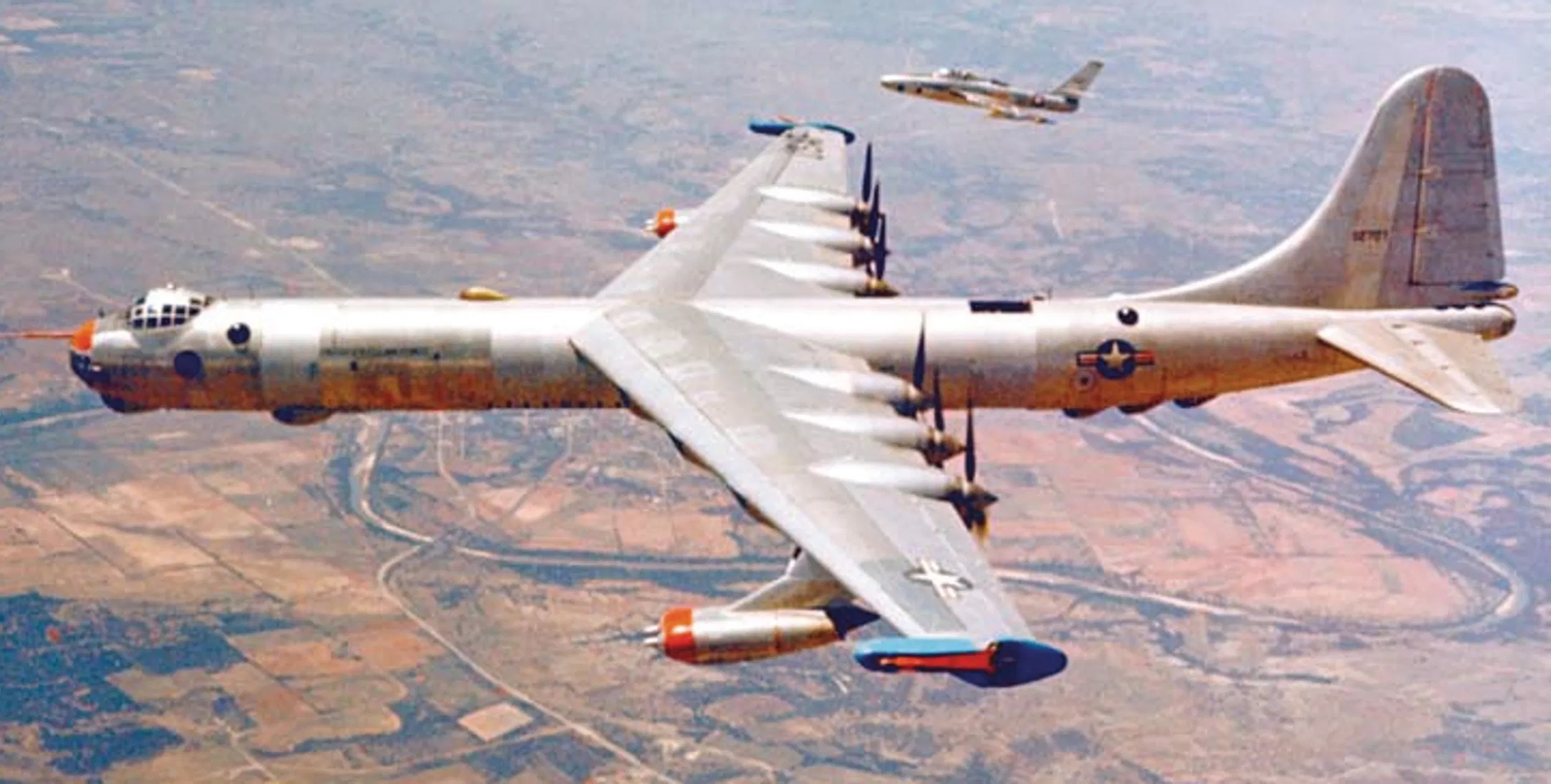
The Convair B-36 Peacemaker stands out as one of the most impressive aircraft ever built, a true marvel of Cold War ambition and engineering creativity. It served as a bridge between the piston-driven bombers of World War II and the jet-powered strategic platforms that would define modern airpower. For over a decade, this behemoth bomber was the backbone of America’s Strategic Air Command, defining the nature of long-range bombing missions and solidifying the United States’ position in strategic deterrence.

The concept of the B-36 emerged during the peak of World War II, when military strategists envisioned the loss of important allied airfields in Europe and the requirement for a bomber that could reach targets halfway around the world. The Army Air Corps released specifications in 1942 requiring a plane to have a top speed of 450 miles per hour, climb to 45,000 feet, and travel 12,000 miles without refueling. Though these lofty figures were gradually reduced over the years, the challenge of designing such an airplane was still daunting.

Convair, originally Consolidated Vultee, met the challenge and built what would be the largest-ever mass-produced piston-engine aircraft. Its 230-foot wingspan and 162-foot-long fuselage were so large that crew members literally crawled through the wings in flight to maintain the engines.

Six huge Pratt & Whitney R-4360 radial engines driving in a pusher arrangement provided power, while subsequent versions included four J47 jet engines for added thrust. This combination gave the plane the nickname “six-turnin’, four-burnin,” and enabled it to cruise efficiently with surges of speed when necessary.

Within, the B-36 had massive bomb bays capable of holding up to 86,000 pounds of ordnance, including the first nuclear weapons. Early models even carried up to 16 remotely controlled 20mm cannons, though these were later dispensed with as technology improved. Even though it never dropped bombs in action, the plane was an independent strategic force.

When it went into service in 1949, on the threshold of the Cold War, it provided the United States with an unprecedented capability to drop nuclear munitions at extreme ranges, and well above what Soviet fighter aircraft could achieve, and served as a potent deterrent merely by being present.

The B-36 also served as the testbed for one of the most daring experiments of its day, the NB-36H nuclear testbed. In the 1950s, engineers envisioned a bomber that would be able to fly for weeks on an onboard nuclear reactor. The NB-36H had a one-megawatt reactor in a heavily shielded compartment, and pilots piloted from a lead-lined cockpit in order to shield themselves from radiation.

From 1955 to 1957, 47 test flights confirmed the shield and systems, though the reactor never powered the engines. Though the idea was eventually scrapped because it was too unsafe, it was a pioneer in advancing the state of aviation technology and research.

Living on a B-36 was an endurance test for its crew of around 15 members that comprised pilots, navigators, engineers, and gunners. Missions frequently took more than 30 hours, so the aircraft had bunk beds, a galley, and a dining space inside pressurized sections to keep the crew alert. With a range of approximately 10,000 miles, a service ceiling at around 50,000 feet, and speeds up to 435 miles per hour with its jet engines operating, the B-36 brought range, payload, and size in a combination unrivaled for its time, although it was subject to operational constraints.

The bomber was not, however, without its problems. Its size and complexity made maintenance difficult, the piston engines were prone to wear, and its slower speed made it vulnerable to the emerging generation of jet interceptors. The inability to refuel in the air was another notable limitation, restricting global mission flexibility.

By the mid-1950s, the jet-powered B-52 Stratofortress offered superior performance, and the B-36 was gradually retired. Production ceased in 1954, and the final example of these giant bombers was retired in 1959.

Four B-36 airframes alone exist today, static-mounted in museums as a testament to an unprecedented era of aviation history. Although its operational tenure was relatively short, the Peacemaker set the course for America’s future long-range bombers and reinforced the credos of nuclear deterrence during one of the most tense times of the 20th century. Its gargantuan wingspan, mixed-power propulsion system, and Cold War aura render the B-36 an enduring icon of American ambition, creativity, and audacity in the air.
